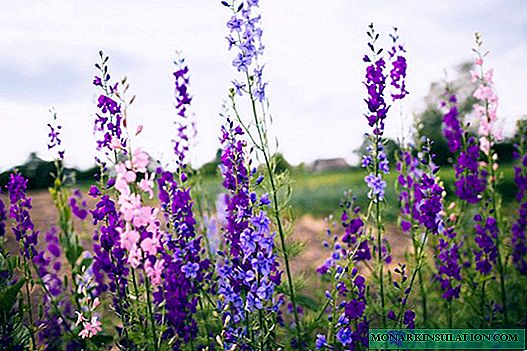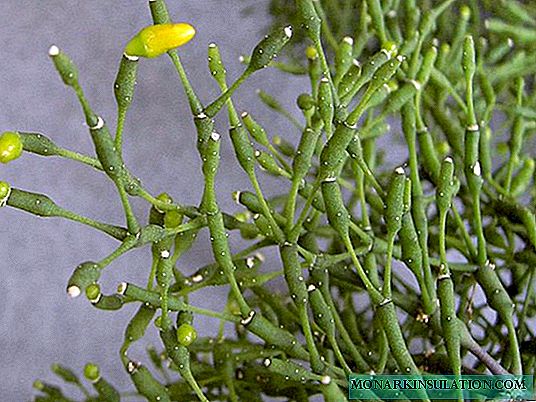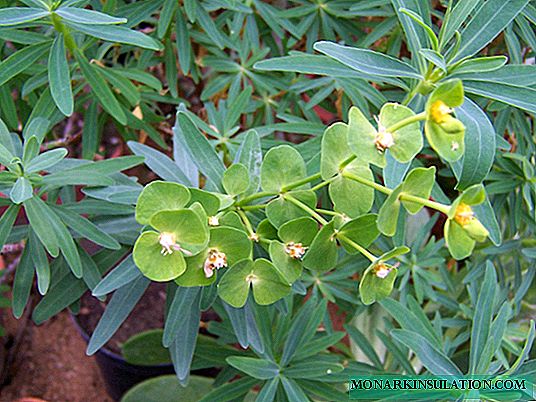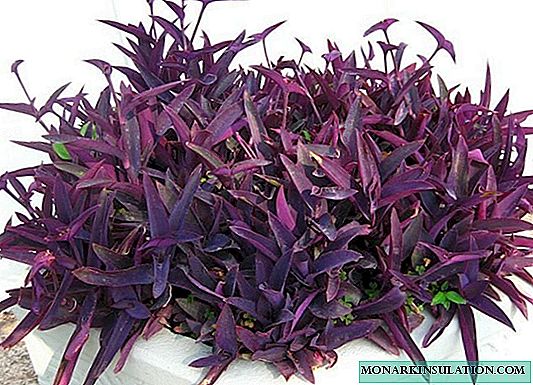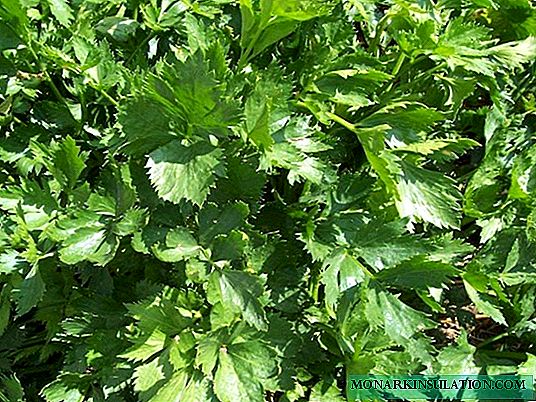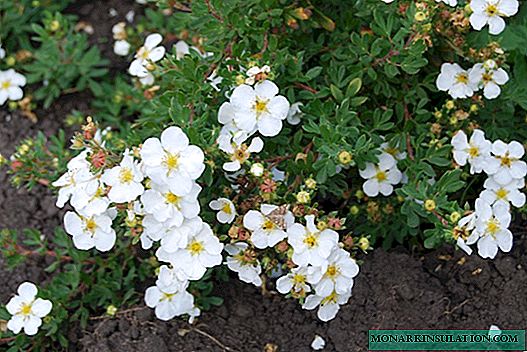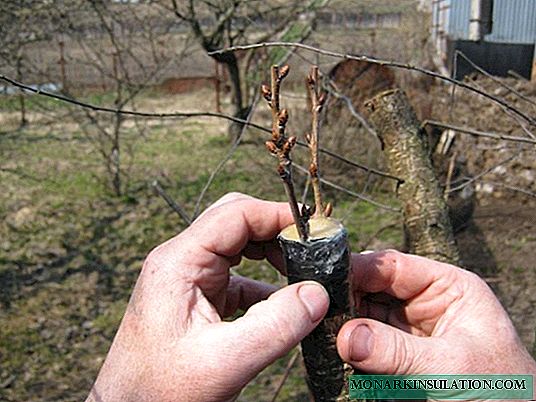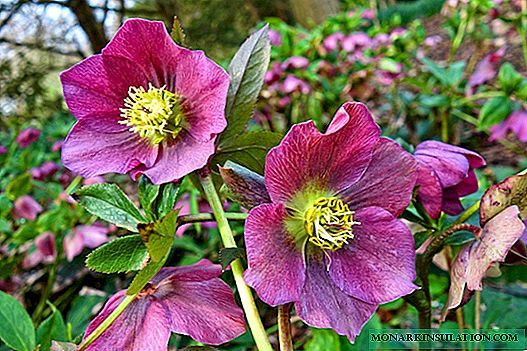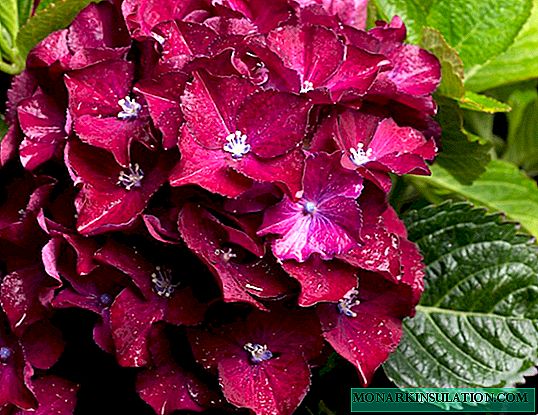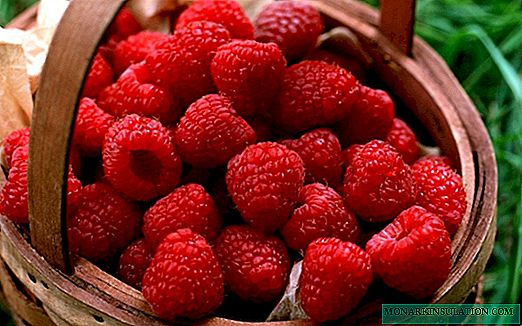
Nowadays, we draw most of the information from the "upper layer", the "cream" of the Internet, sometimes missing that there are official sources there that deserve absolute trust, but there are doubtful ones. There are commercial sites, almost advertising, selling this or that product and praising it in every way. There are also information resources that thoughtlessly copy information from those same commercial descriptions. Without forgetting about this, we will try to learn more about the raspberry variety Tale ...
Does Raspberry Tale Exist
To begin with, the most authoritative source of data on plant varieties that have undergone varietal testing and are recommended for cultivation in various regions of our country is the website of the State Commission of the Russian Federation for the Testing and Protection of Breeding Achievements (FSBI State Commission) - //reestr.gossort.com/ reestr / search. However, in the list of raspberry varieties, the Tale cannot be found there.
In the descriptions of this variety of raspberries, it is reported that its author is a well-known breeder, professor Viktor Kichina, but reliable sources do not mention the variety Fairy Tale when listing varieties of this originator. For example, none of the owner of a beautiful raspberry in the Rostov region, Viktor Fadyukov, who talks about the best raspberry varieties from I. Kazakov and V. Kichina (//vestnik-sadovoda.ru/index.php/plodlsadik/287-malina-luchshie-sorta-ot -ivana-kazakova-i-viktora-kichiny), or on the site of the Siberian gardeners club "Gardens of Siberia", where experienced gardener Yevgeny Sharagan (//sadisibiri.ru/ug-malina-bogatir.html) talks about the latest Kichinovsky varieties. Could not find such a variety and other knowledgeable gardeners. Most likely, Viktor Valeryanovich has nothing to do with plants that sell under the attractive name Tale.
Believe it or not, as the raspberry variety is described on the Internet
Let's turn to mass media. First of all, the Tale is reported to be a standard raspberry, or the so-called raspberry tree. In reality, the tree, of course, does not form, such a raspberry simply has powerful bushes up to two meters high and more with thick woody shoots. Despite this growth, she does not need a garter. Some descriptions say that it came from raspberries Tarusa.
The tale is not a repair raspberry, but with an extended fruiting period from mid-July to autumn.
The berries are large, shiny, weighing from 8-12 to 15-20 grams with excellent taste, raspberries are characterized as sweet and very fragrant. Tasting score - 4.6-5 points. When ripening, raspberries do not crumble from branches, they retain their shape well when harvested. It can be transported successfully. From the bush you can remove up to five to ten kilograms of fruit, but the yield is very dependent on growing conditions and top dressing. Indeed, listen, it’s just that perfect berry!
The tale is unpretentious, resistant to pests and diseases, prolonged drought. Winter frosts withstand up to -23 ºС.
Agricultural technology is described as ordinary. Each escape of the Tale must be formed by pinching the top. Thawed shoots, like garden raspberries, are cut out.
Stack raspberries are recommended to plant according to the scheme of 0.7 x 1.8-2 meters. In one place, it can grow up to 15 years. Water stagnation does not tolerate, therefore it cannot be planted in places where spring or rain water accumulates. Raspberries love loose nutritious soil. On poor soils, a bucket of humus is added to the bottom of the landing pit, the depth of which is 0.4 meters. You can also add wood ash and peat. The soil near the bushes must be weeded and loosened.
Watering the Tale is necessary as the soil dries up, with flowering and ripening of berries a little more often. It is useful to mulch the soil under the bushes with sawdust, mowed grass, peat.
Liquid dressings Tale give only root throughout the season. Spring dressing should not contain fertilizers with a high nitrogen content.
After harvesting, the fertilized shoots are cut without leaving stumps. Young green shoots bend to the ground and shelter for the winter. However, the low winter hardiness of the variety, the inability (!) To bend the lignified shoots of "standard raspberry" and cover them from winter frosts are the characteristics of the variety that do not allow growing Fairy Tale in the northern regions.
So do shoots bend or not bend? Some sources remove this contradiction, arguing that there are two varieties of the Tale - the repair and the usual, formulating this idea something like this: in areas with very cold winters it is recommended to grow a repair variety of the Tale, in which all shoots are removed and only the root is covered from frost the system. In the middle lane they offer to shelter the shoots of the Tale with non-woven materials or reed mats.
With proper care, as they say on the Internet, the Tale is resistant to almost all pests and diseases of raspberries.
Gallery of illustrations, collected on materials about the raspberry variety Tale

- It looks like a bush with berries

- This is how fairy tales illustrate the harvest.
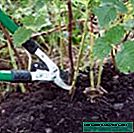
- After harvesting, the prolific shoots of the Tales are cut without leaving stumps.
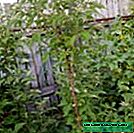
- The tale is positioned as a raspberry tree
Video: the seller describes raspberry seedlings Tale
Gardeners reviews about the Tale
I can say, both in my own experience and in the experience of other Siberians, that in our harsh climate, the Kichinovsky variety of Beauty of Russia grows best, Tarusa also grows, but it is very difficult to shelter under snow, in fact, the method of sheltering under snow is described in the literature wrong, they take shelter in late autumn when the trunk is still green and has not managed to become brown - it isn’t overworked, if you cover the brown trunk - it is guaranteed to break, besides VV Kichina, when he was cultivating his varieties, all the time tried to bring out varieties that were completely covered by snow, so that there was large-fruited varieties with the L gene and the raspberries did not freeze in winter, he worked at the same time to increase the degree of stamping of new raspberry varieties so that raspberries would not be tied to the trellis in summer, in as a result, varieties of the Tarusa type were obtained which, in the winter, freeze very much and lose their yield, and in the fall they hardly bend. As for the Tale ... Kichina’s Varieties are Beauty of Russia, Pride of Russia, Patricia, Mirage, Maroseyka, Lilac Fog, Yellow Giant, Tarusa, Stolichnaya. Also, his students were bred varieties Anfisa, Arabesque, Izobilnaya, Terenty. So draw conclusions ...
Alexey4798//forum.prihoz.ru/viewtopic.php?t=6132
VAS, you were not deceived at the white cottage. The tale is, apparently, one of the hybrids of "standard" raspberries. there are several of them now: tarusa, sturdy, fairy tale. I think that they have some differences, but you will hardly notice any special differences from Tarusa. What I can advise you is not to overfill the plant, keep it in a bright, cool place, be sure to harden. Plant in the ground no earlier than June 10! otherwise you will be left without a "fairy tale" and be sure to protect the seedling for the first time from strong winds.
amplex//forum.prihoz.ru/viewtopic.php?f=28&t=1968&start=45
Quote: Raspberry tree is a common large-fruited remont raspberry. Everyone is used to the fact that raspberries are one vertical shoot, and this raspberry needs to be nipped in June and it gives a lot of powerful side shoots on which there will be berries. The bush is from 1.5 to 1.8 m tall. The berries are large and tasty. After fruiting, the bush is cut. Are you sure what you are saying? Raspberry tree "Tarusa" and "Fairy Tale" bred prof. Kichina. Repair is not. Formed in a standard. Personally, I have two trees, not like 1.8, but they did not grow by 1.0 either. Well, just some kind of phantom. The berries show everything, but nobody shows the tree.
another//www.forumhouse.ru/threads/6707/page-23
Regarding the raspberry Tale, it is difficult to definitely recommend something specific. To purchase its seedlings, if it really exists, is better in reliable proven nurseries.





